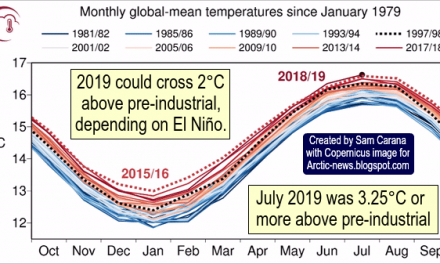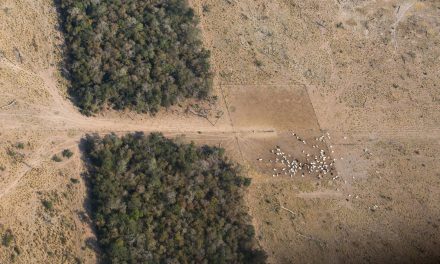Written by Bioneers
Social entrepreneur and author Paul Hawken is a leading voice in the environmental movement. His visionary ideas emphasize changing the relationship between business and the Earth. As humanity seeks to rise to the challenge of our time, Hawken provides a refreshingly positive and comprehensive approach to global warming solutions in many of his bestselling books, including the latest, Drawdown – The Most Comprehensive Plan Ever Proposed to Reverse Global Warming. Bioneers sat down with Paul Hawken to learn more about his work and his plan for helping build a more connected world.
Hawken will present a keynote address at the 2019 Bioneers Conference.
Buy your tickets to Bioneers 2019 here.
BIONEERS: In what ways have you seen the world change as a result of your work on Drawdown?
HAWKEN: My guess is that Drawdown moved the conversation away from despair to a sense of possibility for many people. We know that it is being taught here in the U.S. from 4th grade to MIT graduate school, and that it is in 14 languages now. All of this has surprised our publisher as, generally speaking, climate books don’t sell very well and Penguin was hesitant to publish it for that reason. The outcome is the opposite. It started out as a New York Times bestseller, and this latest printing, the eleventh, was its biggest printing ever. I can’t say what the results are so much as point to a hunger people have for enacting solutions. There are “drawdown”-named groups around the world who have come together to apply solutions that are applicable to their region, city, country.
BIONEERS: Drawdown, was published in 2017. Based on what’s happening in the world environmentally and politically right now, would you make any changes to the book if it were being published in 2019?
HAWKEN: The book was intended to have a sequel called Regeneration, which is what I am working on now with Lynne and Bill Twist at the Pachamama Alliance. Drawdown mapped, measured, and modeled the most substantive solutions to reversing global warming. However, models do not instruct us as to what to do, how to do it, how to prioritize, or the interrelationship among living systems, social justice and climate.
Regeneration is the social expression of Drawdown on a deeper systemic, biological, and human level. We have to be careful that we do not fall into a conceptual trap that we need to “fix” the climate. That is the same thinking that broke it, making the atmosphere something separate and “other.” What we need to transform is how we relate to life down here, both nature and each other. Social justice is at the heart of regeneration and our ability to reverse the climate crisis. Othering Indigenous people, races, religions, regions, and nature is the fundamental disease of our time.
BIONEERS: The Green New Deal proposal got a lot of press coverage this year. What was your reaction to the proposal and the hype—both positive and negative—around it?
HAWKEN: I loved it. It is bold, spunky, and radical. There is so little truth-telling in Washington, D.C., and it was the Green New Truth. It approached the problem from a deeper systemic level, which I think makes it a difficult piece of legislation to pass. My pragmatist side would have done this in steps, making each piece of legislation shorter, more to the point, and easier to get supported.
BIONEERS: When many people and publications discuss environmental issues and climate change, we see words like “fight” and “battle” and “struggle” a lot. In your opinion, is there a way to discuss mitigating environmental issues that is empowering and unifying?
HAWKEN: The language used is very much about sports and war metaphors, verbs that males and the media use for just about everything. Any time there are two sides, we create a semantic coliseum. The term “climate change” itself is incorrect. You cannot fight change. Or if you try, it makes Don Quixote look like a pragmatist. Climate is supposed to change, and the evolving systems of weather are miracles to be grateful for.
The language we hear is about fight, combat, battle, crusade, slashing emissions, the Carbon War Room, negative emissions, decarbonization—all profoundly negative terms. The language and mindset of healing the Earth and atmosphere needs to employ these words: restore, renew, rejuvenate, regeneration, connect, purpose, meaning, respect. What we want to do is change the conditions down here on Earth that are causing global climatic volatility up there and extreme weather everywhere.
BIONEERS: Are there groups being left behind in the discussion about the environment? Why, and what can be done to solve that problem?
HAWKEN: I would say that nearly everyone has been left behind, either callously or unknowingly. Those with little or no resources endure the greatest suffering from climate disruption, and that will continue to increase unless we do something. My guess is that 99 percent of the world is disengaged from the climate crisis. This goes back to how we have communicated the science. To this day, the emphasis is on threat, fear, and potential doom. This is generally very good science; however, it is inept psychology.
We know that fear and threat light up the amygdala, the fight, flight or freeze response of the brain, a response that shuts down the prefrontal cortex, which is the problem-solving part of the brain. Problems need to be presented in the context of solutions that people see benefit in. The solutions that are heard and repeated are about solar, wind, and maybe electric cars. These are crucial solutions in that they focus on reducing fossil fuel combustion: the major source of greenhouse gases. But they are solutions people can do little about because they cannot erect solar and wind farms, or afford an electric car. Yes, people can put solar panels on their house but most people rent.
This creates a disempowered citizenry that hopes “they” fix it, whoever they are, that they get it right, change out the electrical grid, etc. This is a very limited view of what we need to do and it excludes agency, that what each of us can do is critically important. The media infantilizes the range and impact individuals can have and focuses too much on recycling and plastic straws. Thus, people feel disempowered and left behind. But there is another critical point. Even if we turned off every fossil fuel combustion source today, we will still move to climate chaos. We need to stop putting our greenhouse gases into the atmosphere to be sure. We also need to bring CO2 back home where it came from. That can’t be done with a Tesla.
BIONEERS: Who are some of the leaders in your field who you look at and think, “That person is doing it right”? Who gives you hope?
HAWKEN: Well, I am not a big fan of hope. Hope is the mask of fear. They are two sides of the same thing. You can’t have hope without fear. We need to be fierce and fearless, not hopeful.
People I admire are Alexandria Ocasio-Cortez, Greta Thunberg, Bill McKibben always, the children who are marching, Varshini Prakash of the Sunrise Movement, Gail Bradbrook of Extinction Rebellion, Michael Mann, Alexandra Rojas of Justice Democrats, May Boeve of 350.org … I could go on. There are many.
BIONEERS: The plant-based diet part of Project Drawdown seems to get really passionate, both positive and negative, reactions from readers. Do you see that section as being particularly irksome or emotional for your audience, and why do you think that might be?
HAWKEN: Plant-rich diet was the term I coined for Drawdown. It did not prescribe a diet, but rather outlines a shift in awareness about protein and its source. We eat too much protein in more affluent countries, almost twice the 50-55 grams needed for a healthy existence, and we source far too much from animal sources, sources that involve cruelty, degradation and extraordinary environmental impact. The choice of being vegan, vegetarian or omnivore is an individual choice. Drawdown showed that if people reduced their protein intake and moved to greater or total use of plant proteins, it would have a very significant impact on greenhouse gas reductions.
BIONEERS: What would you suggest as one action a regular person could take to mitigate climate catastrophe that would be impactful but also approachable?
HAWKEN: The most powerful action an individual can take is to educate their self. The second most powerful action would be to eliminate food waste in their life. We waste 40% of our food in the US. The third most powerful activity would be to change their diet. The last two are helpful in another way. They make you mindful and connected to the climate crisis every day, all day.
BIONEERS: What are your plans to continue to use your research and influence to affect environmental action?
HAWKEN: My plan is to collaborate with some brilliant women and men to help create Regeneration, How to Reorganize Civilization in One Generation. It looks like it may come out as a documentary by the brilliant Leila Conners, and a one-day event on publication date at the Cathedral of St. John the Divine in New York City, organized by Diana Rose of the Garrison Institute. Collaborators include Haley Melin, Calla Rose Ostrander, John Wick, Charles Massy, Nirmal Kishnani, Cyril Kormos, Laurene Powell Jobs, Geoff Von Maltzahn, and many others.
Basically, we know more and learn faster as a “we,” and as with Drawdown, my hope is that Regeneration can model what the world has to do. The co-founder of Project Drawdown was Amanda Ravenhill and she had this wonderful phrase that I hope to use in another book I am writing called Carbon: “Carbon is the element that holds hands and collaborates.” Exactly what we need to do if want to reverse global warming.















